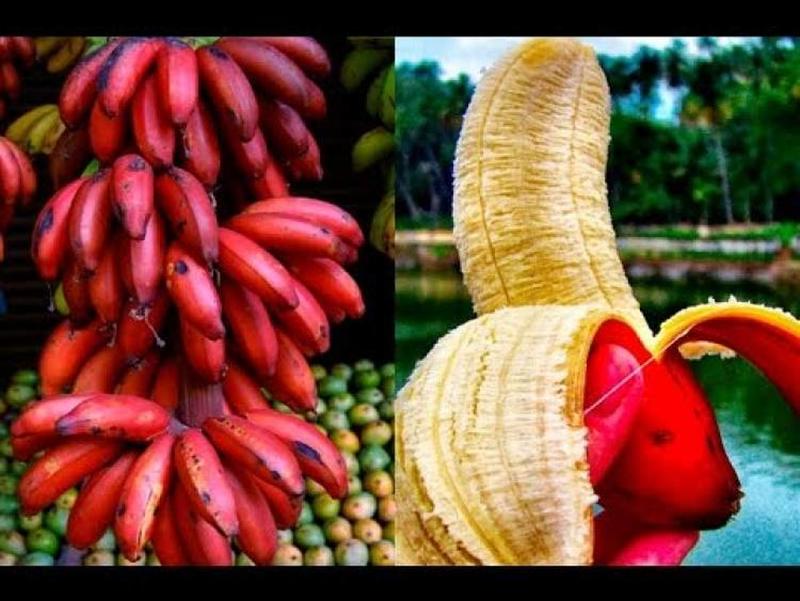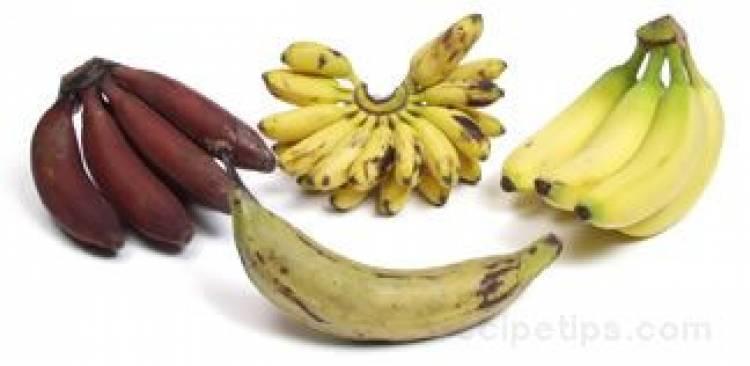Bananas are well stocked in most supermarkets and can be purchased at extremely economical prices. Most people who live in tropical regions of the world regularly encounter all varieties of bananas, ranging from the yellow ones all the way to the green ones. Bananas have an extremely pleasant taste and are easy to eat. Just unwrap their peels and bask in the glory of 6 inches of euphoria. Below is a massive range of bananas for you to hunt the next time you visit a supermarket.

They're aptly nicknamed, Candy Apple Banana, primarily because of their sweetness. They are primarily grown in tropical forests of Hawaii. They have firm flesh with a tinge of pink hues to them. This makes them as perfect snacks.

They are the most common variety of bananas available at most supermarkets around the country. They range from green bananas which are less ripe to the firm, yellow ripe varieties. The ones which are browning can be turned into smoothies.

They are small and have very thin peels. Lady Finger bananas have bright yellow colors, and in certain light conditions can even give you a tiny bit of glint. The peel can be rubbed on scars to give smooth skin.

The Pisang Raja is primarily exported and not easily available in most markets. If you do manage to find them, they will come at a higher cost than other varieties. One of their most famous uses is to prepare banana fritters.

Now this is a variety you may never have come across. They have reddish skin which is slightly on the purple side of things. Red bananas are shorter, fatter and healthier than the rest. They can help with weight loss.

As their name suggests, they are primarily used for cooking. So think of them as potatoes or tomatoes. Combine them with butter and honey over medium high for at least four minutes. They will taste incredibly heavenly.

Because bananas are so overabundant in the market, one can be forgiven to take their health benefits for granted. But if one were to begin jotting down all the good that bananas can do, they would easily run out of pages.

Bananas are packed to the brim with potassium. An important mineral which is used to regulate cardiovascular health and help with blood pressure. Individuals who eat lots of bananas will decrease their chances of getting a stroke.

Potassium will be mentioned numerous times in the post because of how they can help with the kidney. One can argue that bananas are vital to the preservation of our kidneys. But you will need to consume it at least 4 to 6 times a week.

Bananas contain about 3 grams of dietary fiber. Which is huge for fruit this small in size. The fiber itself has two different types, pectin and resistant starch. They help with digestion and help sustain the growth of beneficial bacteria.

Bananas promote the health of our eyes. This is because they contain a small amount of Vitamin A which is vital for normal vision. It also includes important compounds called beta carotene and alpha carotene, together the two of them help bring light into the cornea.

Research has shown that regularly eating bananas can lower the incidence of stomach ulcers. All the nutrients in bananas can help enhance the protective mucus layer around the stomach, which help preventing damage from too much hydrochloric acid.

Bananas destroy cancerous cells, help to increase the number of white blood cells, producing Tumor Necrosis Factor (TNF) and enhancing our immunity. TNF is powerful a substance which combats abnormal growth of tumor cells in the body.

Pectin - a fiber found in bananas - can help to regulate blood sugar levels right after consuming meals. They also help with abnormal food cravings by preventing the gastric from emptying too soon. They also rank competitively in the glycemic index.

Bananas have very few calories, sitting right under 90. Even though they come packed with so many vitamins and nutrients. This means you can incorporate them in your diet and forget about all those flabs around your waist.
